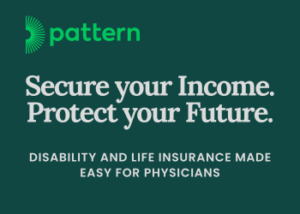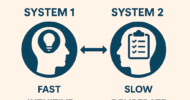Patients deserve better. They lack access to and engagement with quality care — especially behavioral health care. Behavioral health goes beyond diagnosable mental health — everyone struggles with days that feel depressing or times that induce anxiety — you don’t need a prescription to know this. As of 2019, one in five Americans lived with a diagnosable behavioral health issue like anxiety or depression. That number skyrockets when you add chronic conditions like diabetes, insomnia, mental illness, pain management, and substance abuse. And in all cases — diagnosable or not — behavioral health impacts overall health outcomes.
What’s worse, two-thirds of people who suffer from behavioral health issues never get proper treatment for these elevated risk factors. That was all before COVID-19. Mental health IS health and should be treated as such.
With COVID, now is the time for a different approach
There has been a massive spike in the need for behavioral health services since the pandemic began. The CDC reported that 40 percent of adults have symptoms of co-occurring depression and anxiety due to COVID-19. Additionally, KFF reported 53 percent of adults say COVID-19 has had a negative impact on their mental health.
But even those who can get treatment for elevated health risks cannot easily connect their behavioral health treatment with their primary care provider (PCP). The American health care system is “solving” mental health in the most inefficient and ineffective way possible. Worse, they’re trying to fix the wrong problems by over-engineering the solution with single point-solution apps that do not close the decision-making gap or integrate into workflows, and chatbots that apply a “catch-all” mentality to nuanced situations instead of providing comprehensive, collaborative care.
We can no longer ignore these systemic care gaps, lack of follow-up, and inconsistent accountability at nearly every stage of the patient journey. It’s time for a different approach.
Innovative technology must be part of the solution to scale
While behavioral health integration (BHI) has been a long-standing conversation in collaborative care or health’s team-based approach, it hasn’t always been clearly defined and rarely means more than referring a patient in need to a specialist. The biggest shift over the past twenty years has simply been recognizing just how vital behavioral health is to overall wellness.
To effectively and efficiently achieve true BHI, we must engage people in the digital age we currently live in. This modernization begins with innovative technology at its core to drive connected care. Initial technology such as telehealth paved the way but never really changed the way clinicians diagnose or treat patients leaving doctors to still manually manage the following:
- Assess and score patients
- Create a treatment plan
- Follow-up during their treatment
- Measure outcomes
- Refer patients to specialists
That approach just doesn’t scale to meet the present-day level of demand when you have over 40 million Americans with BH diagnoses and a dramatic, increasing shortage of behavioral health specialists. The current model of providing comprehensive care to the top 5 percent of patients isn’t going to cut it anymore. The other 95 percent aren’t able to get the care and follow-up they need because the current model is simply too expensive — for patients and providers.
If we can do this well and move beyond “check the box” apps and or strategies that will not scale-like hiring more people, we will truly transform health care.
A recently published Milliman Research report estimates a potential cost impact of $38 billion to $68 billion, saying: there is clear potential for health care expenditure savings through effective integration of behavioral health care with medical services.
We have to move past “check the box” solutions
The bar for innovation to meet behavioral health needs had to be pushed further to address patient needs before they hit the top 5 percent. Making apps available that don’t inform care plans and triage populations won’t cut it anymore. Failing to integrate (truly integrate) into workflows will create more work, paradoxically failing to improve care management, and will see little to no adoption. Well-intentioned investments in solutions end up just checking the box rather than truly solving these lingering problems.
Behavioral health integration or BHI is a known model — its effectiveness speaks for itself. It is a proven way to improve overall outcomes, reducing total costs of care, and decreasing over-utilization.
It’s expensive, however. It’s also complicated. It requires more people; more time, and more steps in care delivery: Enter technology. tBHI stands for “technology-enabled behavioral health integration.” tBHI is more than jargon. tBHI doesn’t seek to replace humans’ importance in the care model, but rather to scale them, making it a smarter, more effective way of thinking about connectivity across the entire health care system — from patients to providers to payers.
What’s even more exciting is how tBHI scales meet increased demand and proactively address underlying risks that all too often go unnoticed and untreated. And that’s the whole point. Treat more patients holistically with the right type of care at the right time.
The point of truly integrated behavioral health tools isn’t to add an unnecessary layer of technology between doctors and patients. It’s to improve health, scale treatment to those who need it, and ultimately to impact your top and bottom line.
Chris Molaro is a health care entrepreneur.
Image credit: Shutterstock.com




























![Surviving kidney disease and reforming patient care [PODCAST]](https://kevinmd.com/wp-content/uploads/Design-2-190x100.jpg)

![Antimicrobial resistance: a public health crisis that needs your voice [PODCAST]](https://kevinmd.com/wp-content/uploads/Design-1-190x100.jpg)
